Learn how to gain more control over your retirement planning with the little-known but powerful in-service withdrawal strategy! Cary Stamp shares insights on how you can utilize this technique to unlock a world of investment possibilities, reduce fees, and even convert traditional retirement funds to tax-free Roth IRA accounts. Watch now and take charge of your retirement!
TRANSCRIPT:
Hi, I’m Cary Stamp with Cary Stamp and Co. And today I want to talk about how you can get some flexibility in your retirement planning. If you have a large 401k balance or retirement balance at your current employer, there’s a strategy or a technique that’s allowed by almost every 401k plan. That’s called an in-service withdrawal.
Now, you would find this provision in a document called the Summary Plan Description for your 401K. If you’ve never seen that document, you should ask your H.R. Person or whoever administers the plan for a copy of the summary plan description. It will generally provide that if you have a balance of the 401k plan and you reach a certain age, typically it’s age 55 or age 59 and a half that you have the right to remove some or all of the balance of the 401k plan and distribute it either directly to yourself, in which case you would pay taxes or to an IRA for your benefit, which is generally the preferred method so that you don’t have to pay taxes in a 401K plan or a 403B plan.
This is generally a provision that is widely accepted and commonly practice. It shouldn’t come as a surprise, but most people have never heard of an in-service withdrawal. Why might you want to do this? There are several reasons. Number one, your 401k plan probably has a limited number of investment options. Some of them might meet your investment objectives in your long-term planning goals, but perhaps there are some things that you want to invest in that aren’t in your 401k plan by doing an in-service withdrawal and rolling it to your own IRA. It would open up a whole world of possibilities for things that you would be able to invest in. So, you get a lot more flexibility.
Additionally, you need to check what does your 401k plan pay the provider in fees because there is entirely a possibility that by managing the fund yourself or working with an advisor, that’s a fiduciary. You could lower the fees that you’re paying on managing your retirement assets. That’s something that’s critical in making this calculation as well, because you don’t want to roll the money out of a low-cost 401k plan and into a higher cost investment account inside of an IRA. So do that calculation in advance.
Additionally, it gives you the ability to take traditional retirement money, which we would say is tax deferred and convert it to Roth IRA retirement money, which allows you to pull funds from those Roth IRA accounts without paying any taxes at a later date in retirement. Now, the caveat is that if you do make those conversions along the way, that you pay tax at the time that you make those conversions. But if they are substantial and you have a substantial retirement plan account, it may make a ton of sense to make some Roth conversions before you get to the age at which you will have to start taking required minimum distributions from your IRA or 401k accounts. I can explain this all in much more detail later, but it certainly gives you flexibility in Roth IRAs. Now, tax considerations, if you do this properly, there is no tax to roll money out of a 401k plan and into your own IRA.
You simply need to be aware that it is considered a rollover so that when you receive the check from the 401k provider, you have 60 days to make sure that that gets deposited into your IRA account. Lastly, you have for one key provider, you should instruct them not to withhold any taxes because you’re doing a full rollover of the in-service withdrawal. So if they withhold taxes, you’ll have to replace those tax funds out of your own money or that’s considered a distribution from the 401k, which will be added on to your current year’s income taxes. This is a very simple strategy, you do need to know the tricks. We know the tricks.
I’m Cary Stamp with Cary Stamp and Co. And this has been a principal wealth moment.
Disclaimer: Cary Stamp & Company does not offer tax advice. You should consult a tax professional regarding your individual situation.



